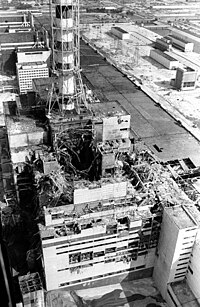
Photo from wikipedia
A pyrene-degrading microbial consortium was obtained after enrichment with mangrove sediment collected from Thailand. Five cultivable bacteria (Mycobacterium spp. PO1 and PO2, Novosphingobium pentaromativorans PY1, Ochrobactrum sp. PW1, and Bacillus… Click to show full abstract
A pyrene-degrading microbial consortium was obtained after enrichment with mangrove sediment collected from Thailand. Five cultivable bacteria (Mycobacterium spp. PO1 and PO2, Novosphingobium pentaromativorans PY1, Ochrobactrum sp. PW1, and Bacillus sp. FW1) were successfully isolated from the consortium. Draft genomes of them showed that two different morphotypes of Mycobacterium (PO1 and PO2), possessed a complete gene set for pyrene degradation. PY1 contained genes for phthalate assimilation via protocatechuate, a central intermediate, by meta-cleavage pathway, and PW1 possessed genes for protocatechuate degradation via ortho-cleavage pathway. The occurrence of biosurfactant-producing genes in FW1 suggests the involvement in enhancing the pyrene bioavailability. Biotransformation experiments revealed that Mycobacterium completely degraded 100mgL-1 pyrene within six days, whereas no significant degradation was observed with the others. Notably, PY1 and PW1 exhibited higher activity for protocatechuate degradation than the others. The artificially reconstructed consortia containing Mycobacterium with the other three strains (PY1, PW1 and FW1) showed three-fold higher degradation rate for pyrene than the individual Mycobacterium. The enhanced pyrene biodegradation achieved in the consortium was due to the cooperative interaction of bacterial mixture. Our findings showing that synergistic degradation of pyrene in the consortium will facilitate the application of the defined bacterial consortium in bioremediation.
Journal Title: Journal of hazardous materials
Year Published: 2018
Link to full text (if available)
Share on Social Media: Sign Up to like & get
recommendations!